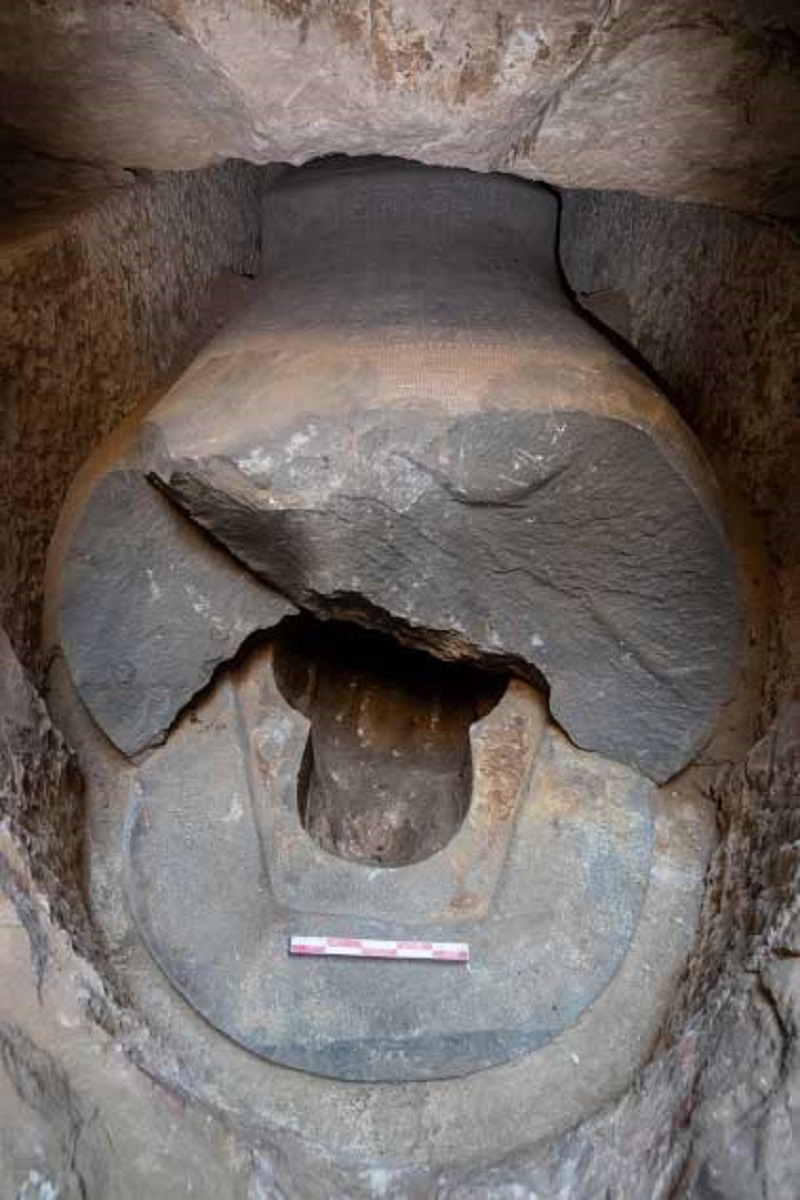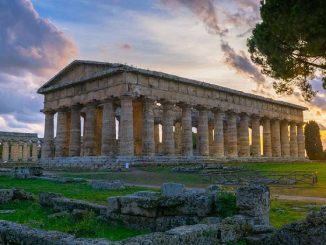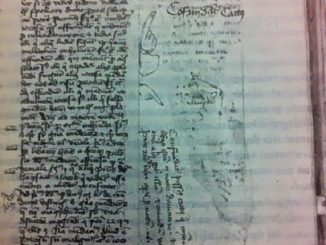While carrying out excavations near the Giza Plateau, a team of Czech archaeologists from Charles University in Prague unearthed a tomb belonging to a powerful Egyptian military commander who lived 2,500 years ago .
The person buried in the tomb is known as Wah-Ib-Ra Meri Nate, the Egyptian Ministry of Tourism and Antiquities recently announced on its Facebook page. He was a military leader who served during the late 26th or early 27th Dynasty, around 500 BC. His role was somewhat unique among military commanders, as the battalions he led were entirely composed of foreign mercenaries.
Wah-Ib-Ra Meri Nate lived during what the Egyptian Ministry called “the first period of true globalism in the ancient world.” This designation was in recognition of the fact that soldiers from outside the country represented Egypt in battle for the first time.
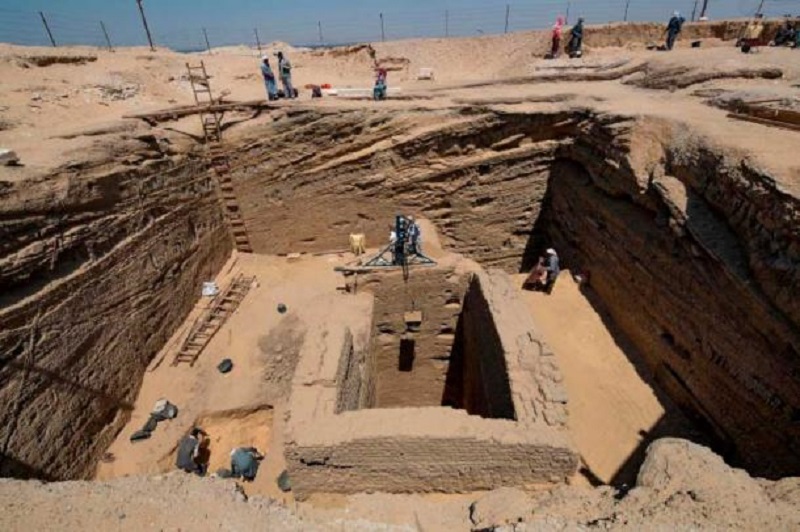
Tomb of the ancient Egyptian commander, 12 km from the Giza Pyramids. (Egyptian Ministry of Antiquities)
Czech archaeologists have unearthed the ancient commander’s tomb just 12 kilometers from the Giza Pyramids, near the Old Kingdom cemetery and the Abusir archaeological site. Notably, the tomb was found near the place where Wah-Ib-Ra Meri Nate’s mummy was discovered 4 months ago. The discovery of the latter suggests that the commander may have been buried in the area, so archaeologists were not shocked to find this burial.
Excavation of a unique tomb
Wah-Ib-Ra Meri Nate was buried in an enormous two-story square tomb specially dug to house the remains of the famous commander. The main shaft is nearly 20 feet (six meters) deep and approximately 45 feet by 45 feet (14 meters by 14 meters) across. A smaller shaft was dug into the bedrock below, this shaft was rectangular and measured 11 feet by 21 feet (6.5 meters by 3.3 meters).
The commander’s mummy was placed at the bottom of this second vault, about 52 feet (16 meters) underground. He was buried inside an elaborate double coffin that had both an interior and an exterior. The outer coffin was made from two heavy slabs of white limestone, while the inner coffin was carved from basalt and formed into the shape of a human body. Overall, the basalt coffin measures 7.5 by 6.5 feet (2.3 meters by 1.98 meters).
The damaged double sarcophagus once contained the Egyptian commander’s mummy. (Egyptian Ministry of Antiquities)
Archaeologists were disappointed to discover that the coffin had been smashed and that the mummy of Wah-Ib-Ra Meri Nate had been removed. They concluded that tomb raiders broke into and stole it more than 1,000 years ago, based on the discovery of two ceramic vases left inside the tomb dating to the 4th or 5th century A.C.
In addition to the lack of a mummy, the space inside the basalt coffin also lacked grave goods. The only things found were a scarab intricately carved into the shape of a heart and an amulet designed to be worn on the head.
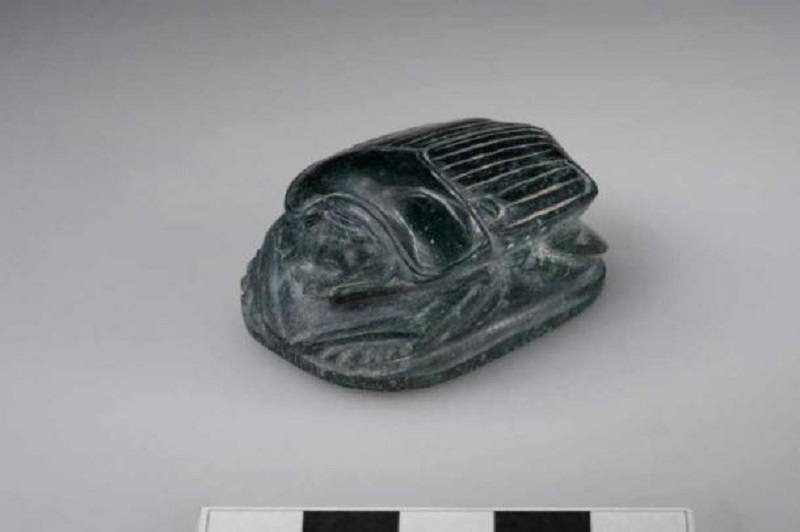
The scarab is carved into the shape of a heart. (Egyptian Ministry of Antiquities)
However, around the outside of the coffin, archaeologists have unearthed some fascinating artifacts. They include more than 400 small ushabti statues made of a polished quartz ceramic material called porcelain. These figurines represent servants who will serve their masters in the afterlife. Czech researchers also discovered two alabaster jars, designed to hold the deceased’s removed organs (they may have been buried near the coffin during a sacred ritual). They also discovered a model of an offering table, 10 model cups, and a thin slab of limestone (called an ostracon) used as a writing surface. The latter contains religious texts written in Egyptian script.
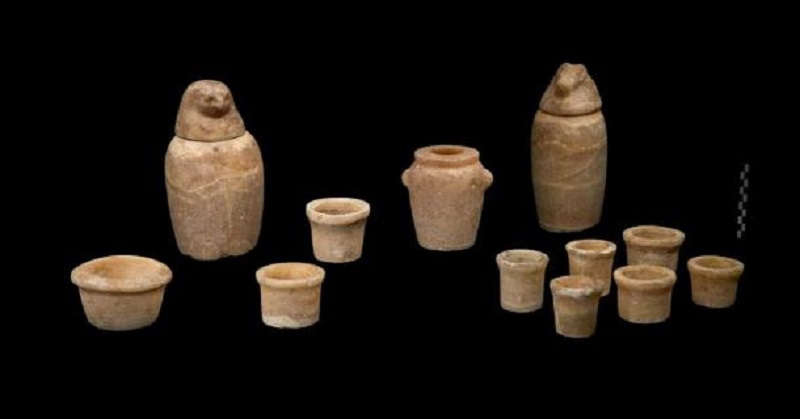
Plaster jars and cups were found in the tomb. (Egyptian Ministry of Antiquities)
The Doctor explains: “Due to limited space, the author of the text decided to cover the ostracon with brief excerpts from the Book of the Dead, incantations that also form part of the transformation ritual and thus ensuring the owner’s peaceful existence in the afterlife.” Miroslav Barta, an Egyptologist from Charles University, led the Czech expedition.
This is not the only inscription found in the tomb which includes exceptions in the Egyptian Book of the Dead, a collection of ritual spells designed to help a deceased person through the process Smooth and safe transition to the afterlife. In the upper part of the basalt sarcophagus, Czech archaeologists discovered more hieroglyphs from that ancient text, in this case all coming from the 72nd chapter of the book.
Overall, what was found in the tomb cannot be considered a rich collection of belongings compared to what was found in other ancient Egyptian tombs. But that doesn’t take away from the significance of this finding.
Dr. Muhammad Mujahid, deputy director of the Foundation, stated: “Although the archaeological excavations at the Wa-ip-Ra Meri Nate cemetery did not provide us with many important archaeological finds or objects Funerals are complicated, but this cemetery is considered unique and important.” Czech archaeological mission. “The design of this well tomb is second to none in ancient Egypt.”
He explained that the discovery of the burial site provided valuable data about a difficult period in Egyptian history, when Persian invasion threatened the country’s independence and stability. Egypt was eventually conquered by Cambyses II, son of Cyrus the Great, who became the country’s first Persian pharaoh in 525 BC. It was he who founded the Persian-dominated 27th dynasty in Egpyt, in which Wah-Ib-Ra Meri Nate may have served had he been alive at the time.
A hero’s burial chamber?
The discovery of Wah-Ib-Ra Meri Nate’s mummification and subsequent burial gave archaeologists the opportunity to learn something about the military commander’s life. Close examination of his tomb shows that it was still unfinished when he died, and if his final burial was unexpected then that could be one reason why goods and inscriptions were found inside. in relative scarcity.
Since he was a soldier, it seems reasonable to assume that Wah-Ib-Ra Meri Nate died in battle. If he had not served during the reign of Cambyses II, he probably would have lost his life in the resistance campaign against Persian invaders before 525 BC. If so, he may have died a hero, and he would have received a dignified and elaborate burial even if his final resting place was not fully prepared for his arrival.
